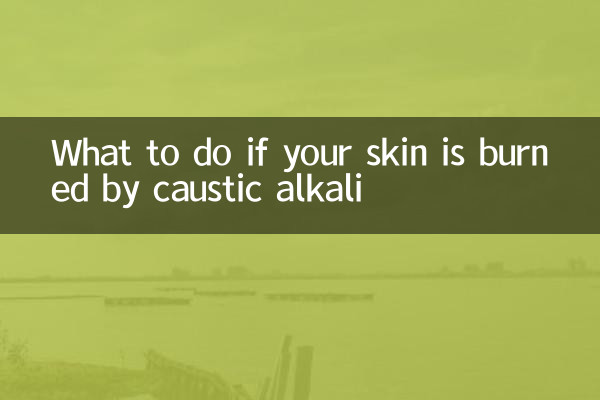What to do if your skin is burned by caustic alkali
Recently, first aid methods for chemical burns, especially caustic soda (sodium hydroxide) burns, have become a hot topic. Caustic soda is a strongly alkaline substance that can cause serious corrosive damage when in contact with skin. The following are first aid measures and precautions for caustic-alkali burns, compiled based on the hot content on the Internet in the past 10 days.
1. Emergency treatment steps for caustic-alkali burns

| step | Operating Instructions | Things to note |
|---|---|---|
| 1. Disengage immediately | Quickly stay away from fire and alkali sources and take off contaminated clothing | Avoid touching the contaminated area directly with your hands |
| 2. Continuously rinse the wound | Rinse with plenty of running water for at least 15-20 minutes | Do not use acidic liquids to neutralize |
| 3. Remove residual chemicals | Wipe gently with a clean cloth without rubbing the skin | Avoid expanding the injured area |
| 4. Cover the wound | Cover with clean gauze or sterile dressing | Do not apply ointments or folk remedies |
| 5. Seek medical treatment | Go to the hospital emergency department immediately | Carry chemical packaging or instructions |
2. Comparison of common misunderstandings and correct practices
| Misunderstanding | Correct approach | scientific basis |
|---|---|---|
| Neutralize with vinegar or lemon juice | Rinse with clean water only | The neutralization reaction produces heat and aggravates the injury. |
| Apply ointment immediately | Rinse thoroughly before seeking medical advice | Ointments may trap residual chemicals |
| pop blisters | Keep blisters intact | Blisters are a natural protective barrier |
| Apply cold compress with ice cubes | Use room temperature water | Hypothermia may aggravate tissue damage |
3. Key points of rehabilitation care after caustic-alkali burns
1.Wound care:Change dressings regularly as directed by your doctor and observe signs of infection (redness, swelling, exudation, fever, etc.).
2.Nutritional support:Increase protein and vitamin C intake to promote wound healing.
3.Scar prevention:After healing, use medical silicone preparations to avoid direct sunlight on the new skin.
4.Functional exercise:Burns on joints require early rehabilitation training to prevent contractures.
5.Psychological support:People with severe burns may need professional psychological counseling.
4. Statistics on recent hot-spot related cases
| Case type | Proportion | main reason |
|---|---|---|
| industrial accident | 45% | Missing protective equipment |
| family accident | 30% | Misuse of detergent |
| student experiment | 15% | Irregular operation |
| other | 10% | Transportation accidents, etc. |
5. Safety recommendations for preventing caustic-alkali burns
1.Work protection:Protective gloves, goggles and protective clothing must be worn when working with caustic soda.
2.Home Storage:Store caustic soda products out of the reach of children and keep their original packaging.
3.Instructions for use:Follow the instructions strictly and avoid direct contact with skin.
4.Emergency Preparedness:Workplaces should be equipped with emergency eyewash stations and flushing equipment.
5.Education and training:Conduct regular training on the safe use of chemicals to increase awareness of prevention.
Discussions on chemical safety on social media have continued to increase recently. Experts specifically remind: the degree of damage caused by caustic alkali burns is directly related to the exposure time and concentration. Timely and correct treatment can significantly reduce the degree of damage. It is recommended that both homes and businesses should be equipped with basic first aid supplies and be familiar with emergency plans.
If a caustic-alkali burn occurs, be sure to remain calm, handle it according to the scientific methods provided in this article, and seek professional medical help as soon as possible. Remember: the best first aid for any chemical burn is immediate, continuous, and copious flushing with water!

check the details

check the details